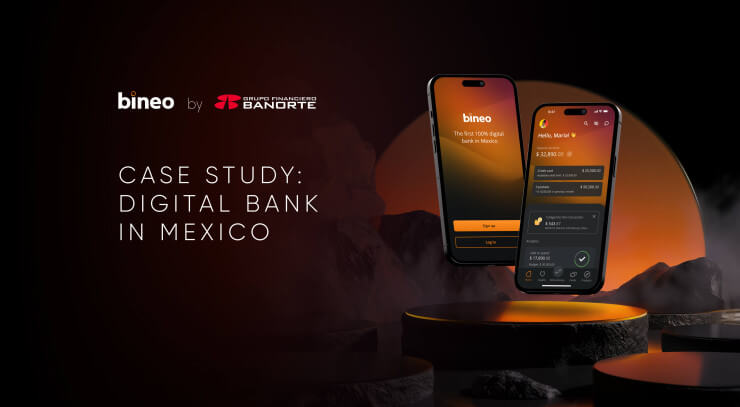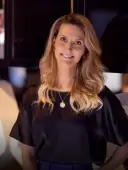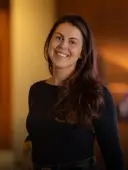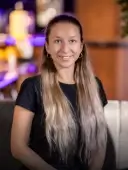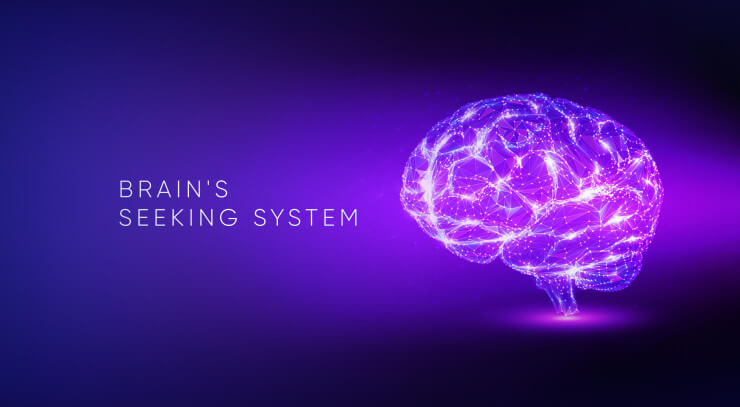If a bank dies in the digital age, it won’t be because of some disruptive Fintech eating its lunch — it will be because the bank starved itself on a diet of comforting lies. These lies are seductive. They let executives feel in control. They make board meetings quieter. They help justify decisions that are easier today but deadly tomorrow.
By exploring the history of companies such as Kodak and Nokia, we find it’s rarely the external enemy that delivers the fatal blow. It’s the internal blind spots, left unchallenged. In banking, these blind spots take the form of deep-rooted misconceptions that keep creeping into strategy decks and town-hall speeches.
Of course, traditional banks face unprecedented challenges — from digital-first competitors to shifting customer expectations. However, the true threats lie within their own misguided beliefs. Following are ten dangerous misconceptions that could sooner or later spell disaster for any bank. They are ten of the most dangerous myths that could, sooner or later, affect any bank that clings to them.
1. Digital Transformation Has an End
Many banks operate under the illusion that digital transformation is a finite project with a clear end point. In reality, digital modernization is a perpetual process. To survive, financial companies must recognize that they are becoming technology companies at their core, continuously evolving to meet new demands and technological advancements.
Stagnation is not an option; continuous innovation and adaptation are imperative. Relying on outdated legacy systems can cripple a bank’s ability to innovate and respond to market changes. Constantly modernizing IT infrastructure is critical to support new digital initiatives, enhance security and improve efficiency. Clinging to legacy systems can lead to increased costs and decreased competitiveness.
Addressing the Misconception:
- Adopt a Culture of Continuous Improvement: Banks should foster a culture that embraces ongoing digital transformation. This involves regularly assessing and updating technology, processes and business models to stay ahead of the curve.
- Invest in Research and Development: Allocate resources for continuous research and development to explore new technologies and trends.
- Create a Digital Roadmap: Develop a long-term digital strategy with short, medium and long-term goals that align with evolving customer needs and technological advancements.
Explore more: Digital Transformation in Banking is an Illusion: Banking Innovation Will Never Stop
2. If Users Can't Use Our App, it's Their Fault
A common excuse for poor service adoption is to blame the users for their lack of understanding. However, the truth is often that the service itself is overly complex and poorly designed. If customers struggle to use your service without constant support, it’s a clear sign that the design and usability need significant improvements.
Addressing the Misconception:
- Simplify and Optimize UX: Conduct usability testing and gather user feedback to identify pain points and simplify the user interface.
- Provide Clear Tips and Support: Offer on-the-go tips and customer support to help users navigate the service and reduce their learning curve.
- Iterate Based on Feedback: Continuously improve the service based on user feedback and analytics to enhance usability.
Explore more: Banking Customers Aren't Stupid; Your App Is Just Confusing
3. A Digital App is Just Another Delivery Channel
Viewing digital technologies as merely another service channel underestimates their transformative potential. In today’s landscape, digital technologies are not just channels but key products that define modern business strategies. Banks must integrate digital into the core of their operations, making it the heart of their value proposition.
Many banks still view digital initiatives as a cost center rather than an investment. This misconception can hinder the adoption of new technologies and innovative solutions. Digital transformation should be seen as a strategic investment that drives growth, enhances efficiency and delivers long-term value.
Addressing the Misconception:
- Integrate Digital into Your Core Strategy: Position digital technologies at the core of your business strategy, recognizing their role in shaping the entire customer experience.
- Develop Digital-First Products: Design products and services with a digital-first approach, ensuring they are optimized for digital channels.
- Align Organizational Structure: Align the organizational structure to support digital integration across all business functions.
Explore more: Instead of Design Sprints in Banking, Run a UX Marathon to Move from Channel to Product
4. Innovation Is About Technology
While technology plays a crucial role in innovation, the true essence lies in enhancing customer satisfaction and enriching their experience. Banks that focus solely on technological advancements without considering how they improve the customer journey are missing a key point. Innovation should always aim to solve real customer problems and improve their interactions with the bank.
Fintech companies can be a great source and a prime example of customer-centric innovation. Viewing Fintechs solely as competitors overlooks potential opportunities for collaboration. Many Fintechs bring innovative solutions and agile methodologies that can complement traditional banking services. Strategic partnerships and collaborations with Fintechs can drive mutual growth and offer enhanced value to customers.
Addressing the Misconception:
- Focus on Customer-Centric Innovation: Prioritize innovations that enhance customer satisfaction by addressing their pain points.
- Leverage Customer Insights: Use customer data and feedback to drive innovation efforts, ensuring they meet real customer needs.
- Encourage a Customer-First Mindset: Build a company culture that values customer experience and continuously seeks to improve it through innovative solutions.
Explore more: Customers' Frustration: The Hidden Cost of Tech-Driven Banking Innovation
5. Product Design is a One-Time Project
Product design is not a one-off task but an ongoing activity. Continuous improvement in user experience is essential to stay relevant and competitive in today’s financial landscape. Banks must adopt a mindset of perpetual iteration, constantly refining and enhancing their products based on user feedback and evolving market needs.
Addressing the Misconception:
- Adopt Agile Methodologies: Implement agile development practices that promote continuous iteration and improvement of products.
- Regularly Update and Enhance Products: Schedule regular updates and enhancements based on user feedback and technological advancements.
- Invest in UX Research: Continuously invest in user experience research to stay attuned to evolving customer needs and preferences.
Explore: Digital Banking ROI: How Product Design Increases Bank Profits
6. The Customer Is About Marketing
Many banks view their customers through a marketing lens, focusing solely on attraction and acquisition. However, the client relationship extends far beyond initial attraction; it’s fundamentally about experience. Ensuring a seamless, enjoyable experience throughout the customer lifecycle is crucial to achieve retention and loyalty.
Customer data holds immense value beyond marketing. Analyzing this data can provide deep insights into user behavior, preferences and needs, enabling banks to tailor their offerings and improve customer satisfaction. Utilizing data analytics effectively can drive more effective decision-making and foster stronger customer relationships.
Marketing efforts are important for attracting customers, but true loyalty is built through consistent, positive experiences. Banks need to focus on delivering exceptional service, personalized experiences and reliable support to retain customers in the long term.
Addressing the Misconception:
- Enhance the Entire Customer Journey: Focus on delivering exceptional experiences at every touchpoint, not just during the acquisition phase.
- Build Long-Term Relationships: Develop strategies that prioritize long-term customer relationships over short-term marketing wins.
- Measure Customer Experience: Implement metrics and KPIs that measure the quality of the customer experience and act on these insights to improve it.
Explore more: Legacy Lipstick: Why In-House Team Struggles with Digital Innovation in Banking
7. Speed Over Quality
In the rush to launch new digital products and features, some banks prioritize speed over quality. This can result in buggy, unreliable applications that only serve to frustrate customers. Striking a balance between timely delivery and high-quality execution is crucial for maintaining customer trust and satisfaction.
Addressing the Misconception:
- Balance Speed with Quality: Implement agile methodologies that allow for rapid development without sacrificing quality.
- Conduct Thorough Testing: Ensure rigorous testing and quality assurance processes are in place before launching new products or features.
- Iterate Post-Launch: Continue to iterate and improve products after launch based on user feedback and performance metrics.
Explore more: From Hero to Zero: The Fatal Impact of a Poor Product Launch in Banking
8. Complaints are About CRM
Many banks view complaints merely as a customer relationship management (CRM) issue. However, complaints lead to strategic information that can highlight pain points and opportunities to enhance the overall user experience with digital products. Addressing complaints should go beyond simply resolving individual issues; it should inform broader improvements in service design and delivery.
Ignoring customer feedback can lead to missed opportunities for improvement. Continuous collection and analysis of user feedback are vital for identifying pain points and areas for enhancement. Banks should actively seek out and act upon customer feedback to continually refine their digital products and services.
Addressing the Misconception:
- View Complaints as Strategic Insights: Treat complaints as valuable insights that can highlight systemic issues and opportunities for improvement.
- Analyze Complaint Data: Regularly analyze complaint data to identify common pain points and trends.
- Use Complaints to Drive Improvement: Leverage insights from complaints to make strategic enhancements to products and services, improving the overall user experience.
Explore more: UX Audit: The Key to Digital Banking Excellence Everyone’s Ignoring
9. Business Strategy and Digital Service Design Are Not Connected
Service design is often perceived as a marketing activity in banks to develop digital delivery channels. However, in a modern bank, digital becomes the primary service offering, turning the bank into a technology company. Apple exemplifies how business strategy is driven by digital service solutions and innovations, generating the most value for the company. For banks, integrating digital service design into the core business strategy is essential for long-term success.
Addressing the Misconception:
- Align Business Strategy with Digital Goals: Integrate digital service design into the core business strategy, recognizing its critical role in driving the bank’s success.
- Learn from Industry Leaders: Look at examples like Apple, where business strategy is driven by digital service solutions and innovations that generate significant value.
- Elevate Digital Service Design: Position digital service design as a strategic function within the organization, ensuring it informs and aligns with business objectives.
Explore more: Align Financial CX with Brand Strategy in Digital Banking
10. Digital Service Design Is Just a Package
Many banks perceive the main challenge to be ensuring digital infrastructure, core and backend for their digital service. They may think the app design can be provided by a white-label vendor's solution or through templates utilized by in-house designers. However, the app architecture and design create the user experience that shapes customers' attitudes toward banking services and the brand. It’s imprudent to deliver a million-dollar banking service through a free copycat app. Investing in bespoke, high-quality design is crucial to stand out in a competitive market.
Addressing the Misconception:
- Prioritize Custom Digital Design: Invest in custom app architecture and Dopamine Banking design, which reflects the bank’s brand and meets specific user needs on an emotional level.
- Recognize the Importance of UX: Understand that the design and user experience of digital services shape customer perceptions and attitudes toward the bank and its brand.
- Avoid Generic Solutions: Avoid blindly relying on white-label or template solutions for app designs; instead customize it to create unique, high-quality digital experiences that differentiate the bank from its competitors.
Explore more: Digital Customer Experience as a Growth Driver for Financial Institutions
Final Word
Lagging banks will not collapse overnight. They will erode quietly as customers drift away to better, simpler, more human-centered alternatives. The real threat isn’t disruption “out there.” It’s the silent comfort of believing you’re safe while your own misconceptions eat away at your relevance.
These misconceptions, if left unchecked, can pose significant risks to any bank’s survival. Embracing a mindset of continuous digital evolution, focusing on user-centric design and leveraging technology to enhance customer experience, are essential strategies for navigating the complexities of the modern financial landscape. By debunking these myths and adopting a forward-thinking approach, banks can thrive, not just survive, in the digital age.
Addressing these misconceptions requires a proactive and strategic approach. By fostering a culture of continuous improvement, prioritizing customer-centric innovation and leveraging technology effectively, banks can navigate the complexities of the modern financial landscape and thrive in the digital age.
The choice is simple: confront these now, or watch them write your obituary later.
Discover our clients' next-gen financial products & UX transformations in UXDA's latest showreel:
If you want to create next-gen financial products to receive an exceptional competitive advantage in the digital age, contact us! With the power of financial UX design, we can help you turn your business into a beloved financial brand with a strong emotional connection with your clients, resulting in success, demand, and long-term customer loyalty.
- E-mail us at info@theuxda.com
- Chat with us in Whatsapp
- Send a direct message to UXDA's CEO Alex Kreger on Linkedin






